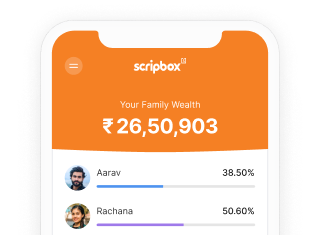This month, given it is the beginning of a period of festivities, I am taking a slightly different tack, from my previous wealth letters to you.
As I sit, penning this, Celebrations as well as spending are on the cards for most Indians. It should be the case for most of us as well, right? Not as much as you would think.
While many of us have mastered the complex art of accumulation, the discipline, the strategy, and the deferred gratification. Yet, when the time comes to enjoy the journey, many of us find ourselves overly hesitant.
This is the possible outcome of years spent honing a specific set of skills. But the second act of wealth requires a new set of skills, not just financial, but psychological. It’s about learning to balance the prudence that got you here, with the celebration you so richly deserve.
The “why” of spender’s guilt
For those who have built their own wealth, the habit of saving is deeply ingrained. It is the muscle memory of your financial life, forged during years when every rupee was meant to be deployed for future growth. Deferred gratification wasn’t just a strategy; it was the way of life.
These virtues, however, can potentially become beautiful cages beyond a point. When your reality has changed, but your mindset hasn’t, “Spender’s Guilt” takes root. You look at a family holiday, a passion project, or a beautiful car, and the internal calculator starts clicking.
It instinctively compounds the expense over twenty years instead of valuing the joy it could bring today. Money remains a tool for security, not a tool for living.
A potential shift in perspective
To break this cycle requires a conscious shift in perspective. It’s about learning to see your wealth not as a scorecard to be endlessly grown, but as a versatile tool for crafting a life.
The central question should evolve from, “How can I make this number bigger?” to “What is the best and highest use of this capital for my life, right now and over time?”
This introduces a new metric for your financial decisions: the “Return on Joy.” A prudent investment might yield a 12% financial return, which is essential. But a family trip might yield a 100% return in shared memories that appreciate in value every single year.
The goal isn’t to abandon one for the other, but to build a portfolio that is diversified in both financial growth and joyful experiences. This is especially useful if you are still on your accumulation journey and financial freedom is some years away. The journey doesn’t need to be one focused only on sacrifices.

The true purpose of a financial plan
We often mistake a financial plan for a restrictive document, a set of rules designed to rein in our spending. This is a misunderstanding. A true financial plan is anything but a cage, rather it is the key to the cage. Its highest purpose is not to limit you, but to liberate you.
Think of it as your official, data-driven Permission Slip. By mapping out your future needs like your children’s education, your parents’ well-being, your own long-term freedom, the plan provides mathematical proof that your foundation is secure. It removes the guesswork and the anxiety.
This is how you spend well and without guilt. Guilt thrives in ambiguity. When you are uncertain if a purchase will compromise your future, you hesitate. But when the plan confirms that your pillars are secure, that ambiguity vanishes.
The decision to buy the car or take the trip is no longer an emotional one fraught with worry. It is now a logical one, made with the confidence that this spending fits within a larger, well-designed life.
Intentional Distribution: For today and tomorrow
The second act of wealth is about intentional distribution. This doesn’t just mean planning for your legacy and heirs; it means distributing a portion of your wealth to yourself, to your life, to the present moment. It’s about consciously allocating your resources to both the future and the present.
This is the art of balancing prudence with celebration. Your wealth continues to work for your future security, but it should also work to enrich your life today. It funds your retirement, and it funds your passions. It builds a legacy, and it builds memories.
The underlying idea is key even for those that are still working towards financial freedom, no matter how many years away it may still be. As long as you have a plan in place, and are disciplined about it, you should always make room for short term joy. I have found that the secret behind a sustainable wealth creation journey lies in balancing joy with your long term commitments.
So, I leave you with a thought. Look at the wealth you have so carefully built. It is a testament to your hard work and your discipline. It has secured your future.
Now, ask yourself: what is it for? What would a true celebration of your life’s work look like, right now? Learning to spend with joy is the final, and perhaps most important, financial skill to master.
Note: If these questions resonate, perhaps it’s time for a different kind of financial conversation, one focused beyond growing your wealth and on how to put it to its best and highest use: your life.

















Show comments